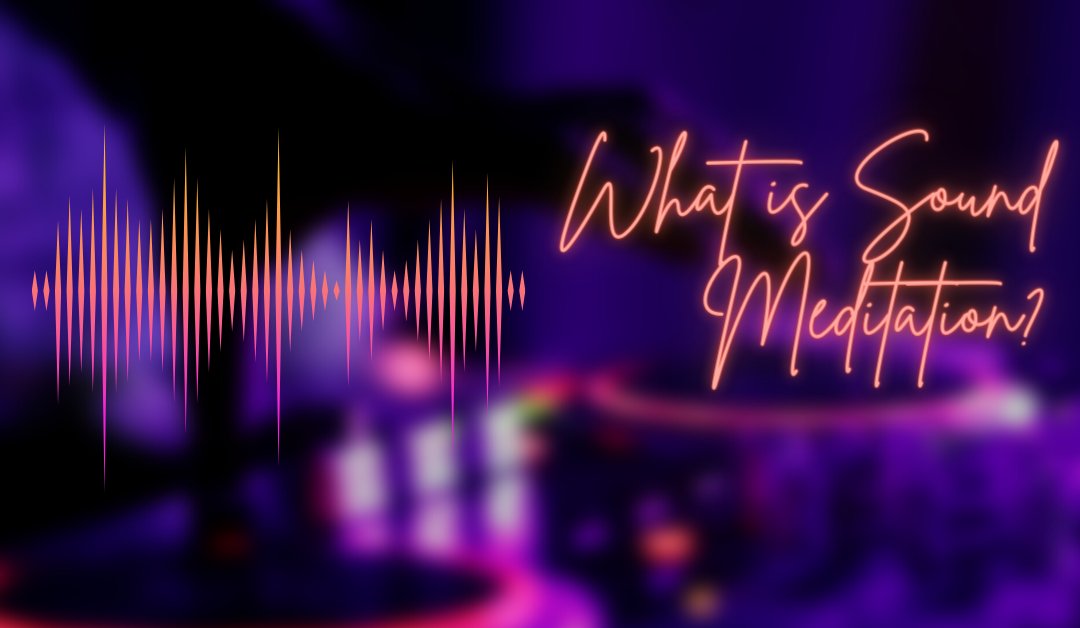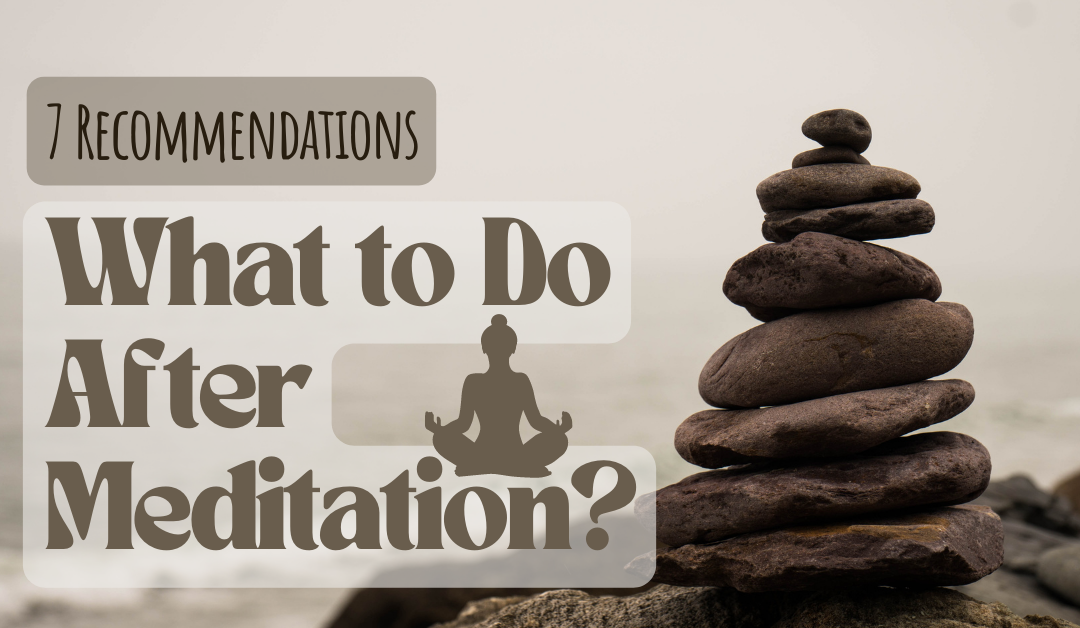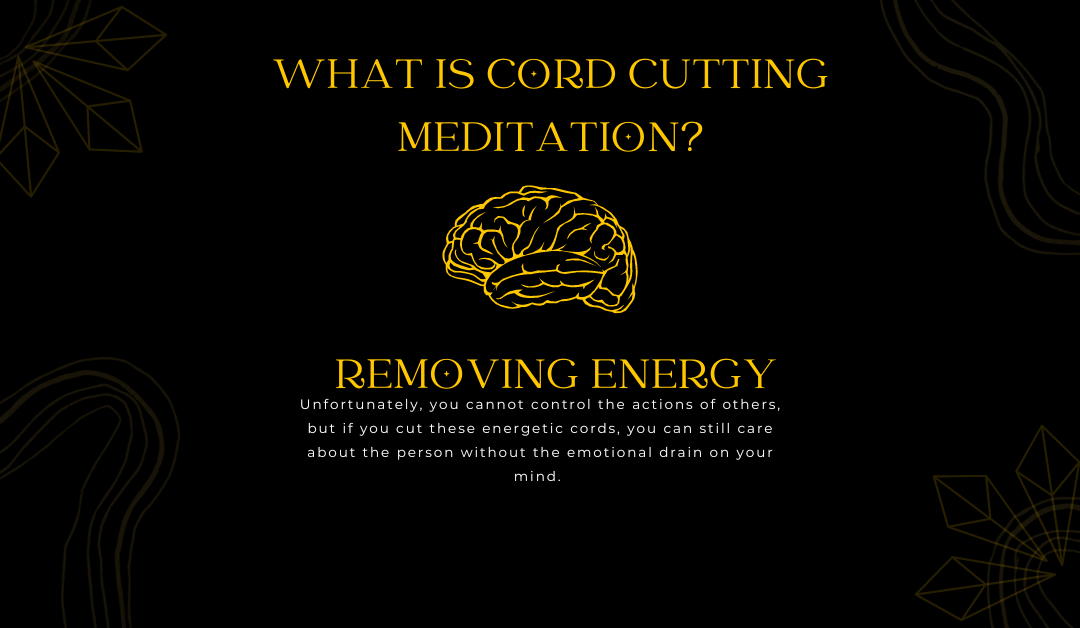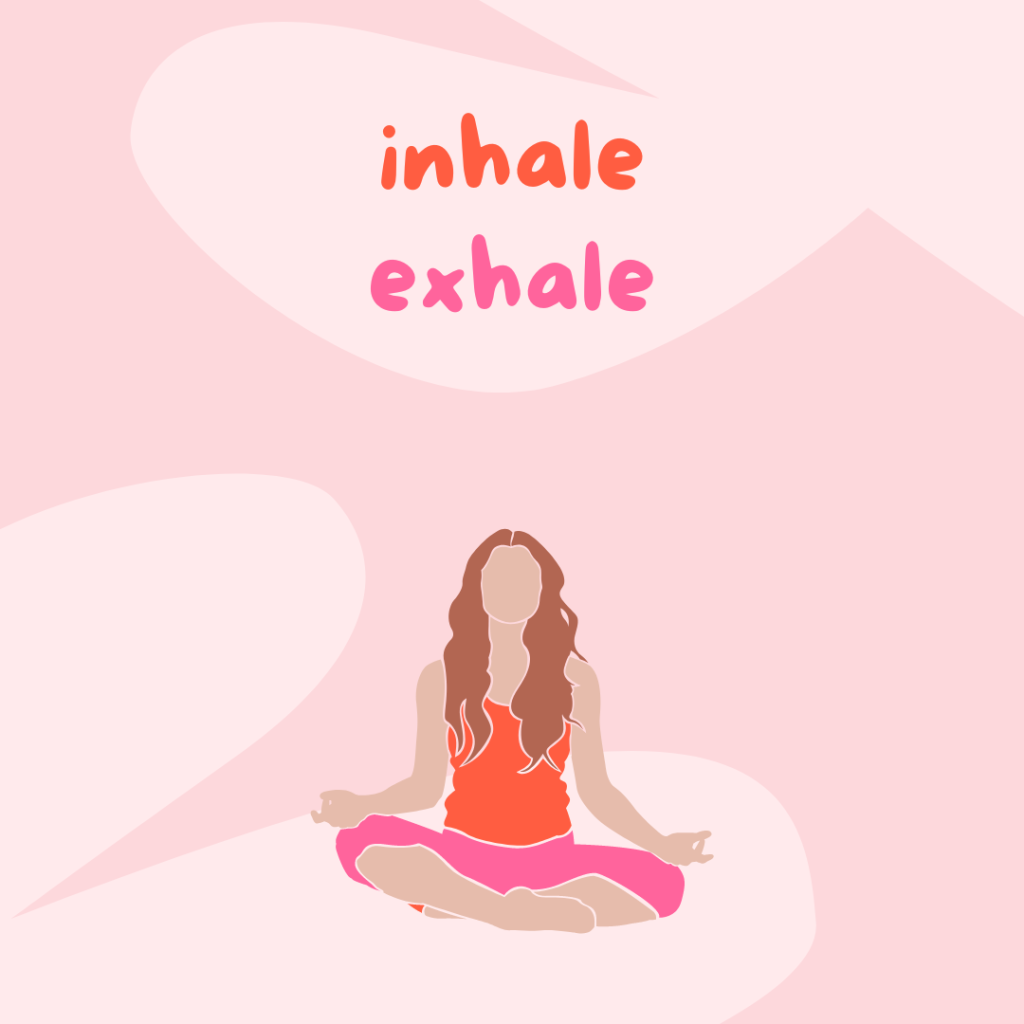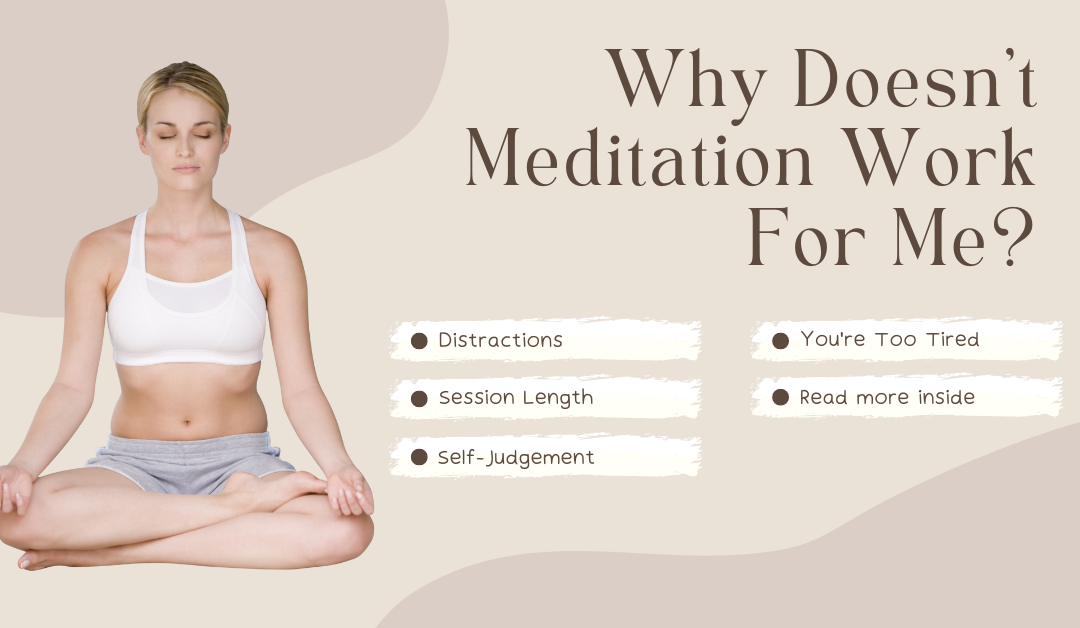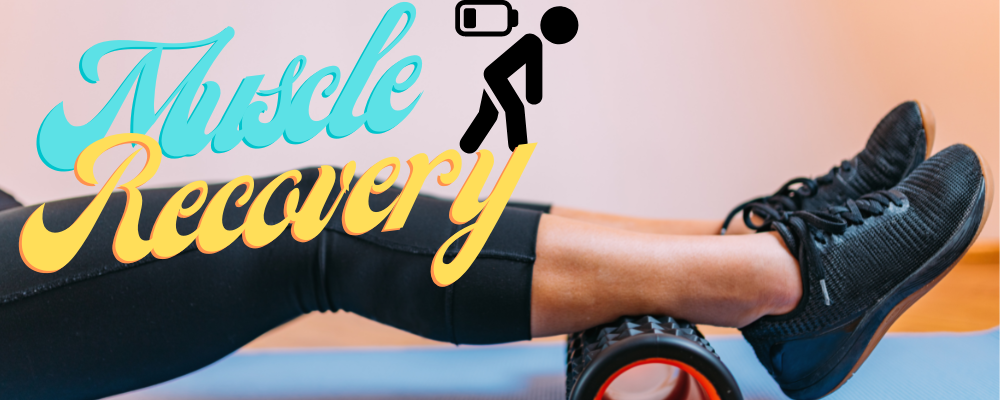
by Michael DeFelice | Last updated Mar 18, 2023 | Health and Wellness |
Sound is powerful, and it has been used in spiritual ceremonies for 40,000 years or longer. Australian tribes were known to use singing bowls because they believed in using instruments for meditation.
And today, we’re going to cover a lot of questions on this topic, including:
- What is sound meditation?
- What are the benefits of this practice?
- What instruments can you use for meditation?
- What do studies have to say about sound meditation?
Let’s start with defining this type of meditation and explaining what it is in greater detail.
What is Sound Meditation?
Sound meditation uses sounds, which become the focal point of your practice. The idea is simple: focus on sounds and allow yourself to be 100% in the moment without distraction. Many people who practice sound therapy for anxiety find it empowering because it allows you to stop focusing on:
In your session, you’ll focus on just sound. You’ll focus on chanting, gongs or other instrument sounds to stay in the present moment.
How Sound Therapy Works
First, you’ll need instruments or tools to make the sounds and you’ll find a list of items two sections under this one that can help. Next, you’ll want to do a few of the basics to set up your meditation space, including:
- Creating a quiet space
- Removing all distractions
- Making a comfy place to sit
Your space should only be filled with the sounds that you’re making.
Next, you’ll want to begin using the instruments or sound types that you prefer, such as bowls or chanting. A few good videos which can help you get started with sound meditation, include:
Purity Sound Bath | Meditation Music for Cleansing the Mind & Spirit | Singing Bowls
Crystal Chakra Meditation with Antique Tibetan Singing Bowls
Sound meditation may not work for you, and that’s okay. There are so many different forms of meditation that you can try that will, including cord cutting, candle, mantra and even mindfulness.
Note: Many people also call this practice sound bath meditation. The “bath” is just being surrounded and immersed in the sound. Sound baths have nothing to do with lying in your tub and listening to music, although that does sound quite amazing.
Benefits of Sound Meditation
Meditation is a well-studied topic, and you’ll find a lot of benefits, which include everything from helping reduce headaches and pains to relieving anxiety and helping you focus. But every form of meditation has its own benefits, although they’re not well-studied.
Honestly, I dive into meditations and give them a try for myself without doing much research on them.
But, I did take the time to research studies on sound meditation, which you’ll find in the last section of this article. With that said, the main benefits of sound meditation, include:
- Reduce anxiety
- Reduce depression
- Alleviate tension
- Improve mood
- Add to well-being
- Short-term cognitive improvement
- Improve in recall speed
However, there are a lot of anecdotal benefits, which are claimed by people who try this meditation, including:
- Lowers stress levels
- Improves depressed mood
- Offers healing properties
- Reduces anger
- Improve sleep quality
While I cannot verify many of these claims, many of them are accepted in the meditation industry and discussed often. Try sound meditation yourself and see if it’s worth practicing or not.
Sound Instruments for Meditation
Many instruments are used to produce meditative sounds that you can focus on, and some practitioners will simply put on YouTube and listen to the sounds others are making to focus on. However, you can also buy many of these instruments yourself or may want to try them to see which you prefer.
A few of the instruments for mediation that are widely used are:
Chanting
Don’t have money to spend on an instrument? Chant. Chanting isn’t for everyone, but it’s free and something you can do any time you want. You can also try saying mantras if you don’t like chanting and don’t have one of the instruments listed below.
Mantras can be especially powerful and help you anchor your mind, too.
Singing Bowls
Using a singing bowl is most common for anyone just trying sound meditation, and you’ll actually see these bowls in action in the videos earlier in the article. You can hit the bowls with a mallet to create a resonating tone that you can focus on.
As you advance, you may try using multiple bowls to create your own orchestra of sound. Each bowl offers its own:
- Unique sounds
- Specific music notes
Many practitioners recommend spending time to find the right bowl, testing out multiple bowls and finding one that matches you. You can always keep multiple bowls available, and use each of them in your practice to create a symphony of sounds that aid in your own healing process.
Rattlers
Rain sticks and rattlers are what most people envision when they think of shamans, and you may even see practitioners using rattlers over a person’s body. If you want to connect with the spirit world or just try something different, consider these two instruments.
Tuning Forks
Tuning forks have been used for centuries to tune instruments, and they produce amazing vibration sounds, too. A lot of practitioners will use tuning forks because they believe that they help open up their chakras and meridian lines.
Plus, these forks can also help you tune other instruments that you have, which is pretty useful.
Studies on Sound Meditation
Many meditation experts recommend sound therapy for anxiety and vibrational sound healing, but does it really work? I was able to dig up a few concrete studies, which I am going to outline below and allow you to make your own judgment on the effectiveness of sound meditation.
2016 Study
A study from the University of California and the California Institute for Human Science. The study included:
- 62 women and men
- Tibetan singing bowls
The researchers state that this is a low-cost, feasible way to reduce:
- Anxiety
- Depression
- Tension
Researchers in the study did state that additional studies were needed to learn about the benefits of sound meditation for physical pain, overall well-being and mood.
2013 Study
A 2013 study on Tibetan sound meditation was done on cognitive dysfunction. The study focused on individuals who were suffering from chemotherapy-induced cognitive impairment. The study included:
- 47 cancer patients
- Mean age of 56.3 years
- 2 weekly meditation sessions over a six-week period
A control group was included in this study, and what researchers found was that meditation led to:
- Short-term cognitive improvement
- Possible increase in processing speed
- Increase in mental health
As with the last study, researchers would like additional studies to take place, which will include a larger pool of participants. The researchers were happy with the results that they saw, but they would like a larger sampling size to determine efficacy and even biomarkers for inflammation.
What is sound meditation? It’s an ancient practice that forces you to focus on the sound and be in the moment. If you’re trying to find your own meditation groove or just want to try something different, give this meditative experience a try.

by Michael DeFelice | Last updated Mar 18, 2023 | Health and Wellness |
Do you know what to do after meditation? Most people just get up and continue with their daily life, but meditation experts often have their own routine after their sessions.
There are no right or wrong feelings after meditation.
But a few things that have helped me after my daily meditation practice, include:
What To Do After Meditation Practices? 7 Recommendations
1. Consolidate the Entire Experience
One of the things not to do after meditation is ignore the experience. Arguably one of the worst things that you could do is just go on with your day and not think about your meditation session – especially as a beginner.
The benefits of meditation come from consolidating the process.
Take a few moments to:
- Think about what you felt
- Focus on what you feel after meditation
- Mentally review the session
Once you consolidate the experience, it’s time to move on to the next step.
Note: Do not focus on the things that went wrong too much. Recognize them but let them go. If you dwell on the negative of the experience, you’ll quickly counteract the benefits of meditation.
2. Clean Up Your Meditation Space
Often, I’ll mix cleaning up my meditation space with point one, where I consolidate everything I feel.
Why?
Cleaning is meditative in itself. You don’t want to jump right into an intense task where you have to focus on school or work.
What most people don’t realize is that cleaning has a positive impact on your mental health.
Cleveland Clinic had a fantastic podcast on cleaning and mental health, which you can learn more about here. What the clinical psychologist on the podcast revealed was that:
- Cleaning improves mental health
- Lack of cleaning can adversely affect negative health
For me, it makes sense to improve the effects of meditation by cleaning up my meditation space. It takes five minutes to clean up the space, it helps you feel better about the experience and also allows you time to compartmentalize everything that you experienced.
If there’s one thing not to do after meditation, it is leave your space cluttered.
3. Journal the Entire Experience
Journaling isn’t a must-do activity, but it’s something a lot of people recommend and it seems to work. You can use your journaling to jot down answers to the following questions:
- What went right when meditating?
- How do you feel after meditation?
- Did you gain insight when meditating?
- What didn’t go as expected?
From personal experience, I know that when meditating doesn’t go as expected, it’s always because I’m worried about something or pushing something off until later. For example, I may be in the middle of meditating and then think about how I have to go get my passport renewed, need to write a blog post or call my brother, whom I haven’t talked to in a long time.
Everyone has tasks they’re putting off until later.
However, when these tasks pop up in your mind in the middle of your meditation, it should be an indicator that you must get things done. Journaling has helped me understand my meditation practice more and actually sheds insight into things I need to get done.
If your mind is wandering to things you’ve been pushing off when meditating, it’s time to get these tasks done.
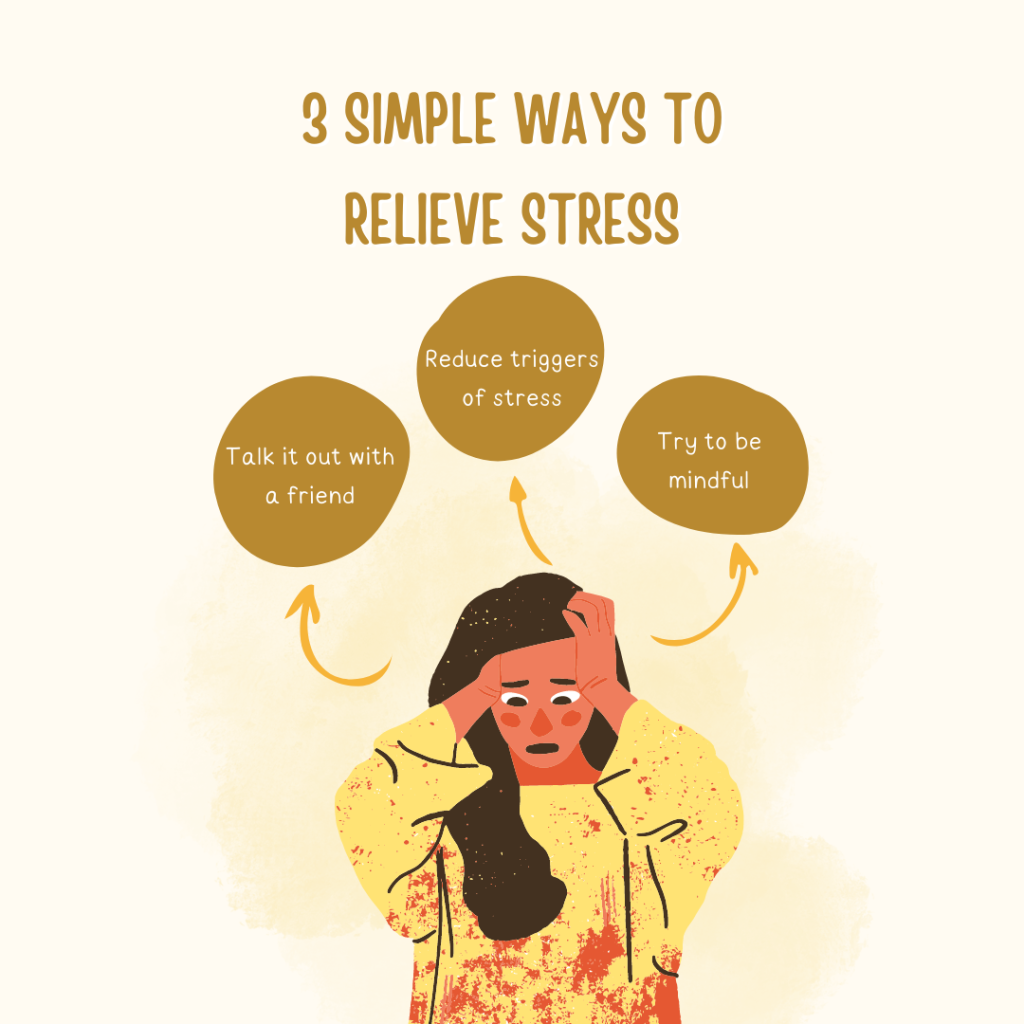
4. Stretch or Destress
If you hate stretching, you can skip this tip. Stretching isn’t for everyone, but you can always try something else, such as:
- Heat therapy
- Massage
- Etc.
Why?
Most meditation styles will help you feel relaxed. It’s not often that we’re able to relax and really relish in it. You can add to this relaxation by stretching, using a massage chair or gun or something similar.
All of these activities will help you reduce any stress or tension that you’re holding on to.
Plus, it’s always good to engage in these activities because everyone feels better when they’re not stressed out.
5. Do Something You Love
Want to know what to do after meditation to ensure that you practice again?
Do something you love.
Connecting habits together is a “hack” that will work very well if you’re trying to create new habits. How should you feel after meditation? Energized and motivated.
So, after your session, try to do something you like or want to improve on:
- Hobbies
- Language
- Exercise
- Etc.
Creating a habit will also make you feel like meditation is a reward. For example, you’ll look forward to meditating every day if you know that you get to practice piano for 30 minutes afterward.
6. Don’t End the Meditation
One thing I learned when trolling the Buddhism section of Reddit is that meditation doesn’t end. When you get up from sitting, gazing or however you’re meditating, you should still meditate on the world around you.
For example, you may want to:
- Practice mindfulness
- Walk in nature and be mindful of everything around you
- Try to feel more at one with nature
Of course, you can’t sit there for hours on end, meditating when you have things to do throughout the day. However, you can and should try to focus on the world around you a little more.
One thing I truly enjoy is being mindful of the food that I consume.
Every bite is filled with flavor and appreciation. You can think of the nutrients and energy that went into growing the food. Or you can think of the entire growth cycle of the food from the sun beating down on the ground to the rain watering and oxygenating the earth to grow the food.
7. Take a Shower
If you meditate in the morning, you may find it difficult to transition from meditating into your daily routine. For anyone feeling this way, one great recommendation I received was to shower after meditating.
Why?
- Showering is relaxing
- Showering is the transition into the day
And showering did seem to help me get on with the day and feel a lot better doing it.
After Meditation FAQs
What to Do If You Feel Light Header After Meditation?
If you feel light headed after meditation, you may want to come out of meditation a little slower. For example, you may want to lay or sit for a few minutes and practice mindfulness just to allow yourself to recenter.
Feelings after meditation vary for everyone, and many people have the light headed feeling you’re experiencing.
It’s just a part of meditation and something that you’ll get accustomed to over time. However, if you feel extremely dizzy and lightheaded in the middle of your session, simply open your eyes and breathe. Allow yourself time to feel better and increase the transition from meditation to the “waking world.”
Tip: Try a different type of meditation, such as candle meditation or mantra meditation, if you can’t shake the lightheadedness when meditating with your eyes closed.
What to Do If You’re Crying While Meditating?
Crying while meditating is a lot more common than you think. Once, Rene and I went to a deep breathing class with a good friend, which was very similar to meditating. We were all lying on the floor, practicing these intense deep breathing exercises, and then it happened.
Our friend started balling. She was crying hysterically.
While discussing it among ourselves, there were a lot of people there that mentioned crying during and after meditation.
Why?
The general consensus was that meditation allows:
- You to let go of your emotions
- You to come to peace with personal pain and experience
Don’t allow crying to cause you to be unable to meditate. Over time, you’ll come to terms with the pain and experiences that you’re feeling and the crying will stop. Allow crying to be a form of healing – it is.
Why Do You Have Headaches After Meditation?
Headaches after meditation are another experience that is quite common among meditators. Unfortunately, I couldn’t find why headaches happen. Some practitioners state that your brain function increases, causing headaches.
But, that’s not something I could verify.
Interestingly, a major analysis on meditation for headaches found that after 20 days of meditation, people were able to reduce their migraine headache pain and negative mood.
Our recommendation: Come out of meditation slower, as advised in the light headed section above and keep at it. Many people that have headaches during meditation find it subsides and goes away over time.
These are just a handful of tips on what to do after meditation. If you take the time to enjoy the experience and stop worrying about feelings after meditation, you’ll find each session gets better. Your mind will begin to focus, you’ll be less concerned about dizziness, lightheadedness and headaches.
Enjoy the experience.

by Michael DeFelice | Last updated Mar 18, 2023 | Health and Wellness |
Meditation styles vary drastically. And you may do amazing with one style and struggle with another. One option for you to try is cord cutting meditation.
What is cord cutting meditation?
We’ll explain this form of meditation in great detail and then walk you through the exact steps you need to take to see results.
Note: If meditation doesn’t work for you, it’s never a bad idea to just try something different. Sometimes, it’s the type of meditation that is holding you back rather than the practice itself. Cord cutting meditation is just another option to try, especially when dealing with negative people or energy.
What Is Cord Cutting Meditation?
Cutting the cord meditation revolves around:
- Energy cords
- Negative energy
- Positive energy
- Cord connections
The practice of cord cutting is right for you when you want to invite light into your life and let go of emotional stress. In short, this practice allows you to cut the ties someone has with you – energetic ties.
For example, do you have someone in your life who is an energy leech?
Of course, you do. In fact, 40% of people had negative emotions in 2020, setting a record in the process. This figure is likely much higher. Cord attachments are the connection you have with other humans that have an energetic hold on you.
This person can be an ex, an old friend or someone who you cared deeply about and is no longer in your life. You’re leaking energy to this person even if they’re not around you or really a part of your life.
And you internalize all of this energy.
Perhaps thinking of the person causes you anxiety, stress, negative emotions or other strong feelings.
If you engage in cutting the cord, you’re going to break free of these negative thoughts and energy that often sit in your subconscious mind, slowly impacting your energy.
How to Do Cord Cutting Meditation: 5 Easy Steps to Begin
Cord attachment is never healthy in my mind because there must be energetic boundaries. Unfortunately, you cannot control the actions of others, but if you cut these energetic cords, you can still care about the person without the emotional drain on your mind.
You can find peace of mind.
And you can begin experiencing the benefits of cutting the cord meditation by following these simple steps:
1. Create a Comfortable Space
First, you need to have a meditation space that is perfect for you and your needs. Everyone’s space is different, and you can have:
- Candles
- Incense
- Music
- Pillows
- Blackout curtains
Anything you want. However, one thing you need to ensure is that the space is free from noise and distraction. You need to have just 15 – 20 minutes to dedicate to your practice so that you can begin your energetic practice.

2. Sit and Breathe
Sit in your meditation pose and be sure that your posture is good. You want the energy to flow through your body, and it will make it much easier to breathe when you maintain good posture. Breathing is going to be crucial to cutting the cord.
Once comfortable:
- Close your eyes
- Focus on your breathing
- Inhale as long as you can
- Slowly exhale until your lungs are empty
- Repeat
After doing this 10 times, it’s time to move on to the next step.
3. Light Summoning
Light work is the foundation of cutting the energy cords that are causing your emotional attachments and finally putting boundaries up. You will continue with your eyes closed and maintain your deep breathing.
But you’re now going to do the following:
- Focus on the top of your head, or the crown
- Imagine a beam of light emanating from the crown
- Put positive thoughts into this beam of light
- Focus on the light and the way it makes you feel
The beam of light is thought of as a universal source or center of your energy. You need to fill this light with , intentional, positive thoughts.
4. Begin Cutting Cords
When visualizing and traversing the light from the crown of the head, it’s time to follow this light to the people that they branch off to. In this case, the person that you have an energetic connection with that you want to sever the cord with.
Now, you’ll need to:
- Visualize breaking the cord with these energy-leeching individuals
- Ask the light to remove the fear and anxiety you feel
- Ask for help finding and removing the negative bonds you have with individuals
You’ll want to ask for guidance from the light during this practice to try and find the right cords. The light will help you find the right cords to be severe. Ask the light to stop the overwhelming emotions that you have with the person and guidance to cut these energy-draining emotions.
Note: Some individuals will call on angels, such as Archangel Michael for guidance. But if you’re not religious or follow another religion, just skip this part. It’s not 100% necessary, and cord cutting will work just fine whether you’re an atheist or one of the most devout people in the world.
5. Cut and Fill the Void
Finally, you’re going to begin cutting cords of light, and you’re going to notice that there are holes or voids which exist. You can visualize filling these voids with positive light and emotions to fill them up.
Many people find that filling the void is extremely helpful for them, and it’s something that works very well.
The goal here is not to feel a sense of emptiness that the person is no longer energetically attached to you. Instead, you should feel happy that you don’t need to rely on the individual for your own happiness, nor do you need to feel a sense of emptiness. Instead, allow someone or something else to receive this energy – including yourself.
When you cut these energetic ties, you’re finally able to:
- Feel energized
- Stop thinking of the other person
- Not talk about the individual often
- Etc.
If you want to bring your practice to the next level, I highly recommend reading through one of our most recent articles: What to Do After Meditation?
Cord Cutting Meditation FAQs
How Often Should You Do The Cord Cutting Meditation?
As much as you like. Cord cutting meditation benefits make this a practice worth integrating into your routine. For example, if you meditate daily, you may want to practice this form of meditation a few times a week.
Do what’s good for you.
However, if you want to focus on just this type of meditation session, most meditation experts recommend:
- 20-minute sessions per day
- At least 5 – 10-minute sessions if you’re short on time
If you don’t like the experience the first time, give it a few sessions to really judge cord cutting for yourself.
Why Is Cutting The Cord Meditation So Effective?
It’s energizing. Unfortunately, there are no real studies available to say why people experience intense benefits from cord cutting. However, what practitioners state is that this practice helps:
- Recover lost energy
- Re-establish energy boundaries
People are filled with emotions. When you practice cord cutting, you’re helping free yourself from these unhealthy emotions so that you can heal.
What is cord cutting meditation? It’s fun. Exciting. Different. You need to try new things and have new experiences in meditation to truly grow as a person. Cutting the cord meditation is just one other style of practice to try.
You may find that this meditation practice works well for you, or you may find greater success practicing mindful living.
However, it’s definitely worth trying a session or two of cord cutting meditation to see if it’s something you like or not.

by Michael DeFelice | Last updated Mar 18, 2023 | Health and Wellness |
Meditation is growing in popularity. People want to experience the mental clarity of meditation and others want to turn to mindful living. However, there’s a growing number of people asking, “why doesn’t meditation work for me?”
For a long time, I was one of these people, too.
After falling asleep or getting stuck in thoughts about everything, I figured that I had an attention disorder. But, then I started delving deeper into the question of why can’t I meditate?
And I found out that meditation is harder than most people think, and it takes time to learn how to meditate. For some people, meditation is boring, and if it’s something that you’re being pushed into and don’t really care about, you might never master meditation.
However, for everyone else that can’t meditate, these few reasons may be holding you back.
What Doesn’t Meditation Work for Me? 7 Reasons Why You Can’t Meditate
1. Your Meditation Space is Filled With Distractions
Meditation apps are helping a lot of people get into meditation. In fact, one report found apps led to a sharp rise in people meditating. However, if you’re trying to meditate and you hear your notifications going off or someone is trying to FaceTime you, it will interrupt your meditation practice.
You need to completely disconnect and have some time for yourself to meditate.
Your daily routine should include 10+ minutes of meditation, where all you have to stay focused on is meditation. This means:
- Let everyone in your home or space know that you need to be 100% alone
- Turn your phone off or on vibrate
- Shut off notifications on your phone, smartwatch or other devices
- Keep animals out of the room – just for your session
It’s true that “focusing” on meditation is a misnomer because you’re supposed to let your mind go into a state of nothingness or bliss, but a lot of people can’t meditate because they’re multitasking.
Multi-tasking works great for a lot of things in life, but it doesn’t work when you practice mindfulness or meditation.

2. Practice Sessions Are Too Long
Remember when I was asking myself why can’t I meditate? My expectations were far too high. If you think you need a 30-minute meditation session or nothing, you’re wrong. Instead, when you’re just starting out, try keeping your meditation to 5 – 10 minutes
When you notice that your mind begins to wander and you’re no longer meditating but thinking about work or worrying about what you’re going to eat for dinner, get up.
Short mediation blocks work best for people questioning why is meditation so hard?
3. Judging Yourself
Focusing on yourself and your own faults is never going to help you meditate. Often, people judge themselves the entire time:
- Am I meditating properly?
- Why doesn’t meditation work for me?
- What’s wrong with me? This should be easy!
- I’m horrible at this.
- I’ll never learn to meditate.
And then, by judging yourself, you begin focusing on all of these negative thoughts and start blocking out the positive thoughts you need to find success in meditation. Instead, make meditation judgment-free and focus on being present.
One method that works very well for remaining in the present when meditating is to focus on your breath.
- Breathe in and focus on the lungs filling
- Breathe out and focus on emptying your lungs fully
- Focus on your chest rising and lowering as you breathe
4. You’re Dead Tired
One mistake that I was personally guilty of when trying regular and candle meditation was thinking that it would be easy to do while lying in bed right before going to sleep. Even if it’s the middle of the day and you’re exhausted, meditating is a bad idea.
Why?
You’ll fall in and out of sleep the entire time. Many meditation teachers call this the “sleepy passive state.” If you’re really tired, once you close your eyes and let your mind wander, you’ll start dozing off.
A better idea is to:
- Meditate first thing in the morning, or
- Meditate at a time when you’re wide awake
If you exercise, you may find that you’ll have a much easier time meditating after your workout. Find a good time to meditate and stick to it.
5. Practicing Inconsistently
Meditation is a lot like anything else in life: it takes practice. If you meditate once every six months, you’re going to start at square one every time. The ideal way to begin meditating is:
- Start in small meditation blocks of just five minutes
- Practice every day, or more days than not
If you make it a point to meditate daily, you’ll find it becomes much easier over time.
6. Expecting Way Too Much
Meditation means something different to everyone. Some people expect way too much from their experience, but meditation is a cumulative effect rather than an immediate benefit. Don’t have expectations of:
- Spiritual awakenings
- Laser-focus
- Major life improvements
- Eliminating all of life’s problems
Instead, just meditate to benefit from the heightened awareness that it will provide you with in time. Take your meditation journey one session at a time and don’t expect anything.
7. Considering Mind Wandering to Be Failure
When I was first starting to meditate, my mind wandered a lot. Unfortunately, I thought this wandering meant failure until I read a book by Thich Nhat Hanh. I can’t remember the exact phrase, but he mentioned focusing on a leaf or object that you were thinking about.
So, if my mind wandered and I was thinking about having to run an errand, I would envision walking to the errand and then visualize a leaf. I would follow the leaf to a serene location and watch it float down the water. Feel the breeze in the air. Etc.
Use these “daydreams” as the escape your brain needs.
Focusing on the leaf helped me a lot because I was able to block out everything else in my mind by focusing on the leaf. Silencing your mind is a beautiful retreat from reality and something that meditation offers if you’re willing to practice, consistently.
Bonus Tip
If you really want to meditate but are finding every excuse not to or fail to actually practice, one of the benefits of group meditation is that it keeps you motivated. Sometimes, group meditation works very well for some people, while others prefer to be alone.
Maybe you would excel in a group environment if you’re not finding success with your own practice.
Does Meditation Work For Everyone?
Eventually, meditation works for most people. “Everyone” is quite a large number, and there are going to be people that think meditation is boring and do not put their all into their practice. While I’m not 100% positive, I am also sure there are people with attention disorders that simply can’t meditate because of it.
But for most people, meditation will work.
If you try mantra meditation and it doesn’t work for you, try other forms of meditation. You’re sure to find some form of meditation practice that will work for you.
Wrapping Up
Now instead of asking, why doesn’t meditation work for me, you can focus on ways to start meditating. Often, there are simple distractions or false expectations that you’ll be a meditation practitioner in a single meditation session.
Instead, you need to change your mindset and the goal of meditation.
Regular practice is a must if you want to feel a sense of peace, improve body awareness, reach spiritual growth or just experience the positive impact and emotional benefits of meditation. Stay on course. Enjoy your meditation journey. And keep practicing.
Over time, you’ll find that benefits from meditation start popping up and you enjoy the journey even more.

by Michael DeFelice | Last updated Jan 21, 2023 | Fitness |
Do you have digestive issues or just find your normal source of protein difficult to digest? Then, hydrolyzed protein benefits are perfect for you. Hydrolyzed protein powder comes in whey isolate form, so it’s ideal for an after-workout shake or just to add more dietary protein to your diet.
What Is Hydrolyzed Protein?
Hydrolyzed protein is often associated with dog food – really – but there is also hydrolyzed protein powder made for human consumption. Hydrolysis occurs to isolate certain amino acids, but when it’s used in protein, it is often done to reduce the allergen properties of protein.
For example, infant formulas often undergo hydrolysis to help reduce allergens, especially milk intolerance.
The main reason to use this type of protein is that people have:
- Digestive function issues
- Allergies to certain proteins
People who have issues digesting normal protein will benefit from the breaking down of peptide bonds responsible for holding amino acids together. Enzymes are used to break down the peptides into one of two types of protein:
- Partially hydrolyzed protein
- Full hydrolyzed protein
If a protein is fully hydrolyzed, the amino acids have all been isolated. Otherwise, the product is likely partially hydrolyzed, meaning that long protein strands have been broken down to smaller protein strands or, even single amino acids.
4 Hydrolyzed Protein Benefits
What are the benefits of hydrolyzed protein? There are quite a few. We’ve added only the benefits that have studies to back their claims. But there may be even other benefits that researchers haven’t validated.
1. Easy to Digest
The main reason most people seek out this type of protein is that it’s easy on the digestive system. If you have allergies or a compromised digestive system, hydrolyzed protein will be beneficial because it’s already partially broken down.
When taking any whey protein, it can be difficult on the stomach due to lactose.
Depending on the person, they may experience none or some of the following symptoms:
- Bloating
- Cramping
- Diarrhea
Bloating is common, but then some people feel 100% fine after taking their protein shake. Of course, your digestive health will play a significant role in how you feel, but the hydrolysis process makes it much easier to consume protein without digestive discomfort.
With this said, if you have a severe allergy to milk protein, you’ll want to seek out another form of protein that isn’t derived from lactose.

2. Enhances Muscle Recovery More Than Just Whey Concentrate or Isolate
A 2009 study on the benefits of hydrolysate whey protein looked at the supplement’s ability to enhance muscle force-generating recovery. The study was setup as follows:
- Participants engaged in eccentric exercises
- Participants consumed 25 grams of protein following exercise
All protein was consumed with flavored water following intense workouts. The study found that recovery of muscle force was greater in participants who consumed the hydrolyzed whey than in those that had the isolate version.
Soreness in the two groups was equal, so this easy-to-digest protein won’t help reduce muscle soreness.
However, if you need to have fast muscle recovery, such as is needed by athletes or even strongmen that may train close to competitions, it may be beneficial to swap in a hydrolyzed protein into the mix.
3. Increases Muscle Protein Synthesis
Protein synthesis is why many people are reading this article and focusing on their protein content. A 2019 study wanted to determine the muscle protein synthesis benefits of whey hydrolysate vs intact whey protein.
The study looked at:
- Fractional synthetic rate (FSR)
- Muscle protein synthesis (MPS)
It’s well-known and understood that one of the hydrolyzed protein benefits is the ability to stimulate MPS. However, researchers wanted to determine if hydrolyzed provided higher MPS than intake protein.
Researchers made the rats swim for two hours and then ingest protein. The rats were then tested every 30 minutes for the first two hours after exercise to measure FSR.
Whey protein hydrolysate was shown to offer greater MPS after exercise, especially when consumed at lower doses of 0.5g per pound of body weight versus 2g per pound of body weight.
Note: The study was conducted on rats, so more research in this area is certainly needed. However, the benefits should also be experienced in humans.
4. Restores Glycogen Post-Workout
Glycogen is an integral part of recovering from a workout or any strenuous activity. When you need to restore your depleted fuel stores, muscle glycogen is what your muscles need. With all of this in mind, a 2004 study from the University of Texas at Austin conducted a study that found carbohydrate drinks with the addition of protein can help with:
- Fueling your next workout
- Limiting muscle damage after a workout
However, the study does leave a lot to be desired. But a study from 2010 showed that when you mix carbohydrates with whey protein hydrolysate, skeletal muscle glycogen activates key Akt/PKB enzymes and even PKCs.
Overall, glycogen stimulation was higher when hydrolyzed protein was added.
If you’re having difficulty recovering from intense workouts or want to maximize your recovery efforts, you may want to consider adding carbs and protein into your after-workout protein shake.

Don’t Forget About the General Benefits of Protein
There are a lot of specific hydrolyzed protein benefits to consider, but don’t forget about general protein benefits either. Consuming more protein also helps with:
- Hunger and Appetite. Are you always hungry? It’s easy to reach for a carb-heavy snack. However, if you want to lose weight, protein can help. Studies on protein and weight loss found that protein makes you feel fuller even when you consume lower calories. For example, consuming 200 calories of protein will help you control hunger far better than 200 carb-filled calories. In fact, increasing protein intake by just 15% – 30% led to overweight participants in one study eating 440+ fewer calories – naturally.
- Boost Bone Health. No one really thinks about their bone health until they have bone-related issues, but your bones will begin to lose mass as you age if you don’t maintain a good diet. Studies show that eating protein over the long-term will help you maintain bone mass. Additional studies show higher protein consumption lowers your risk of fractures, osteoporosis and bone mass loss.
- Increase Your Metabolism. Do you want to boost your metabolism? Studies show that protein has double or higher the thermic effect compared to fats and carbs. In addition, studies also show higher protein counts can lead you to burn an additional 80 to 100 calories per day. When compared to low protein eaters, calorie expenditure may be 250+ calories higher.
- Aids in Maintaining Weight Loss. Eating fewer calories per day and increasing your metabolism by consuming more protein will lead to significant weight loss benefits. It should come as no surprise that higher protein consumption can also help a person maintain weight loss over the long-term. An interesting 12-week study found that overweight women who increased protein consumption by 30% and made no other dietary changes lost 11 pounds, on average.
Add in the benefits of an increase in muscle mass and strength and trying to up your protein intake makes a lot of sense. Even a small boost in protein consumption will lead to significant benefits in muscle mass, bone health and even caloric intake.
Still have questions about hydrolyzed protein benefits or this protein in general? The following questions should help clear up some of the questions that you have.
Hydrolyzed Protein FAQs
What Is Hydrolyzed Wheat Protein?
Hydrolyzed wheat is meant for hair health in most cases. This protein comes from wheat germ and extracts amino acids and peptides thought to be good for your hair.
What Is Hydrolyzed Whey Protein?
Are you trying to crush your leg workouts, lift heavy or just want to stack on muscle? Then, you’ll likely want a hydrolyzed whey protein powder.
Why?
- It’s the same whey protein that bodybuilders swear by
- Absorption rate is even faster
If protein supplements or high protein diets cause you digestive discomfort, a hydrolyzed protein diet may be a good option for you.
Whey protein hydrolysates were shown in one study to accelerate muscle protein synthesis compared to traditional whey.
What Is Hydrolyzed Soy Protein?
Just like the other forms of protein, soy protein hydrolysates are the breakdown of the larger soy molecules into smaller particles. However, this isn’t something that you’ll take as a protein supplement.
Instead, soy is used to create vegetable protein products and is used as a flavor enhancer.
Whey Protein Isolate Vs Hydrolyzed: Which Offers Faster Absorption
Hydrolyzed protein powder absorbs faster in the gut than both isolates and concentrates. The hydrolysis process helps remove or unbind amino acid and allow for faster metabolization. The one downside is that the extra processing of the protein makes it more expensive.
If you don’t have digestive problems, you can save money by purchasing an isolate or concentrate supplement.
Protein has a lot of benefits, whether it’s pea protein, whey, casein, isolated or hydrolyzed.
Which protein should you take?
It’s an impossible question to answer without knowing you or your goals better. But, many “gurus” recommended mixing protein to allow for different absorption times. For example, you may mix hydrolyzed whey protein with casein because of their differing absorption times.
If you’re trying to maximize your strength or power or just supplementing to meet your dietary needs, you should at least consider the hydrolyzed protein benefits above.
